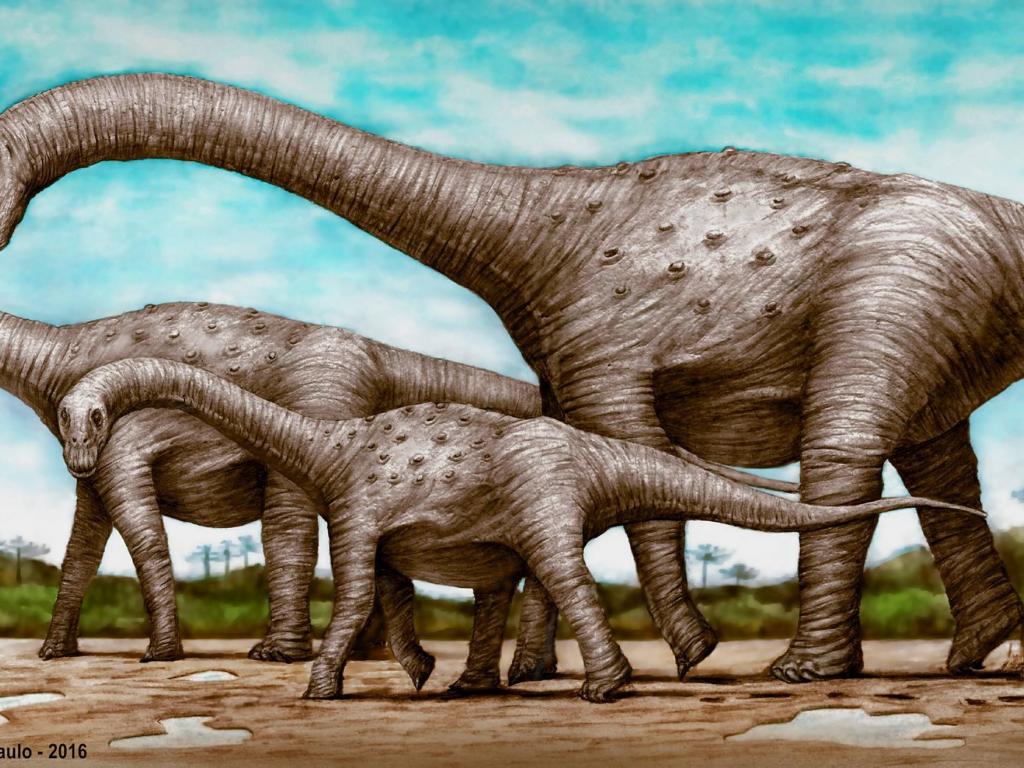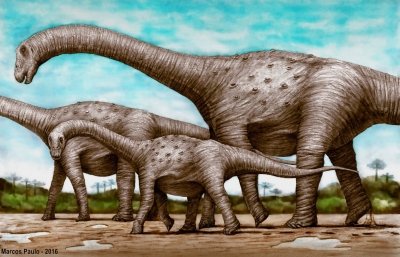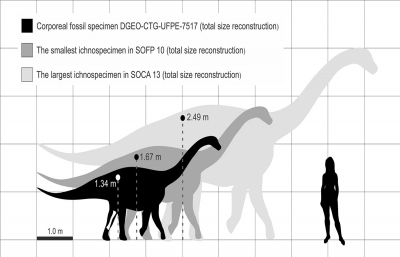UCT researcher helps identify young dinosaur in Brazil


This finding has international significance, since it is the oldest record of a titanosaur from central Gondwana (the ancient supercontinent which once united today’s southern continents), and it is also the oldest record of a Cretaceous dinosaur from Brazil.
The fossilized footprints (tracks) had suggested that large sauropods lived in the area, but until now no body fossils were recovered from Sousa. Aline Ghilardi says “Our find is quite significant, since now we finally have the first bony evidence, that titanosaurs roamed this area about 136 million years ago”.
By comparing the leg bone with other known dinosaurs, the scientists were able to show that the specimen belonged to a titanosaur, which is a type of “long-necked", plant-eating dinosaur. Some of the world’s largest dinosaurs that ever lived are titanosaurs, for example Argentinosaurus, which was about 36m in length and weighted about 80 tons. Interestingly the dinosaur found in Sousa, was much smaller, only 1.6m high (to the hip) and probably not more than 5.7m long. This raised the possibility that either the animal was a “dwarf dinosaur” or a juvenile of a larger animal.

UCT’s palaeo-biologist, Professor Anusuya Chinsamy-Turan analysed the well-preserved fossilized bone microstructure of the animal and was able to solve this mystery. Chinsamy-Turan’s says, “When I studied the bone microstructure under the microscope, it was clear that the bone belonged to a juvenile titanosaur. The bone structure had features that indicated that the animal was still a fast-growing young individual and that it had died before it had reached full body size”. The large footprints found in the area further suggest that the animal would almost double in size as an adult long-necked dinosaur.
Some morphological features of the bone indicate that the material may belong be a new species, but more bones are needed to fully describe a new species. For now, the single leg bone is fondly referred to by the nickname, Sousatitan, which means "the titan of Sousa".
Brazilian palaeontologist, Tito Aureliano, a co-author on the research says, “Our find is quite inspiring. We are now hopeful that with further prospecting in the Sousa region we will find new dinosaur bones”. The bone is currently on display for the public in the "Vale dos Dinossauros" Park, at the Sousa municipality in Brazil.
